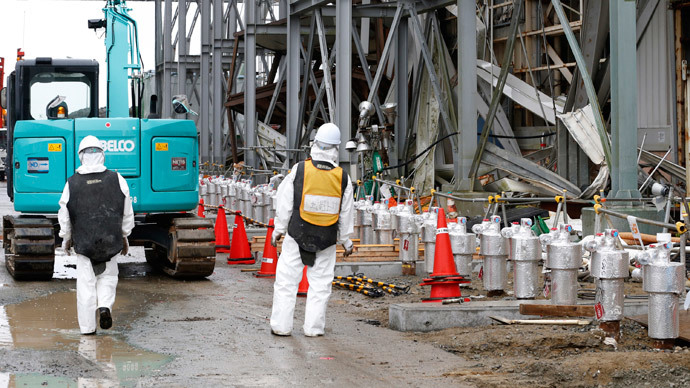Radioactive water found in Fukushima, source unknown

The operator of the Fukushima Daiichi nuclear plant has started an investigation of newly detected ditch water containing relatively high levels of radioactive contamination. Officials aren’t ruling out that polluted water spilled into the sea.
The contaminated water was found in a ditch in the upper part of a drainage channel at the complex. The ditch is close to the tanks containing highly contaminated substances. The specialists of the Tokyo Electric Power Company (TEPCO) which operates the plant discovered 1,900 becquerels of beta ray-emitting radioactive materials per liter in the samples taken on Tuesday. Still, radioactivity levels of water in a downstream portion of the drainage ditch showed about 100 becquerels, or even lower on March 3.
The contaminated water is kept in special tanks in the plant. The TEPCO specialists said on Thursday no leaks were found in the tanks and the levels of their contents did not change.
Nevertheless, TEPCO is still investigating the possibility of leakage and is trying to define the source of the radioactive substance.
The experts say a certain amount of contaminated water could have flowed to the sea after rain.
Last month, TEPCO admitted there was a leak of highly contaminated water from the roof of Sector 2 of the plant for 10 months. The amount of contamination was 10 times the normal figures. The company failed to report the incident at the time and has been severely criticized for keeping information about the leaks secret.
READ MORE: Fukushima fishermen ‘absolutely shocked’ at TEPCO failing to report leak for 10 months
The nuclear operator has been trying different strategies to halt the spread of radioactive materials for four years now, with multiple hurdles to overcome and costs spiraling out of control. The protracted cleanup is said to require decades to fix before people can return and start farms in the vicinity again. The costs are projected to be in the billions, with the government stepping in to help as well.
In February, the UN nuclear watchdog (IAEA) said Japan had made significant progress, but there is still a radioactive threat, and a “very complex” scenario at Fukushima.
Japan is battling the consequences of the three meltdowns at the Fukushima Daiichi nuclear power plant that was destroyed in March 2011, when a 9.0 earthquake triggered a devastating tsunami. More than 18,000 were killed in the catastrophe called the world’s worst nuclear disaster since Chernobyl in 1986.












